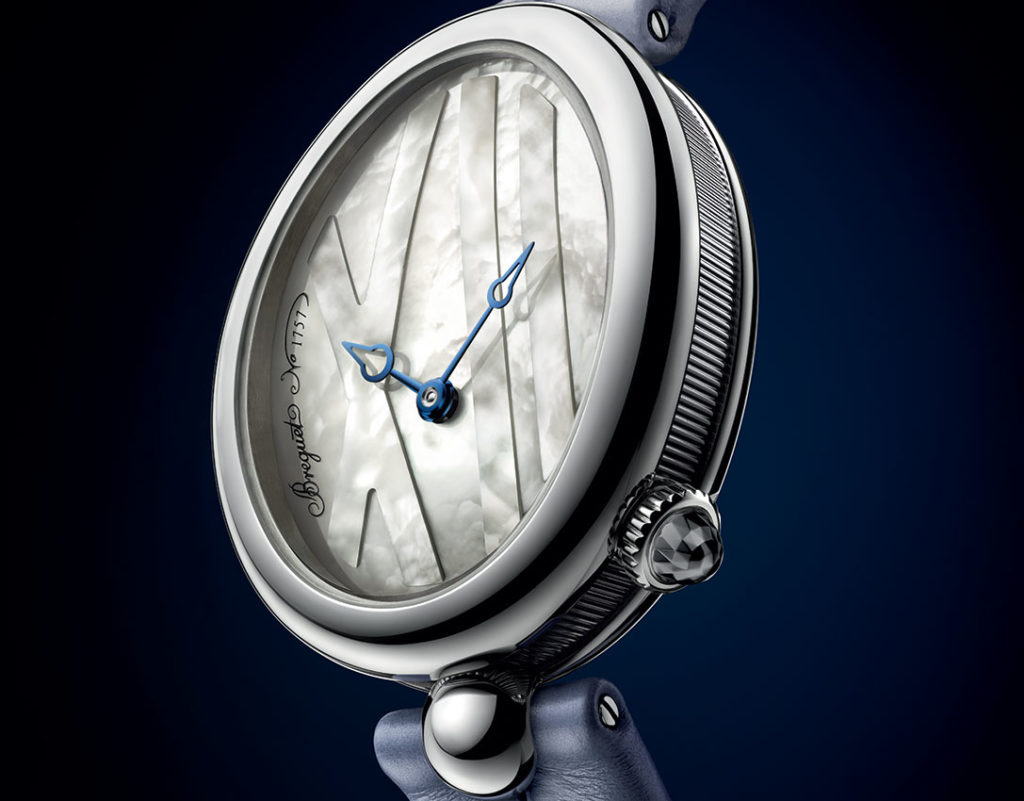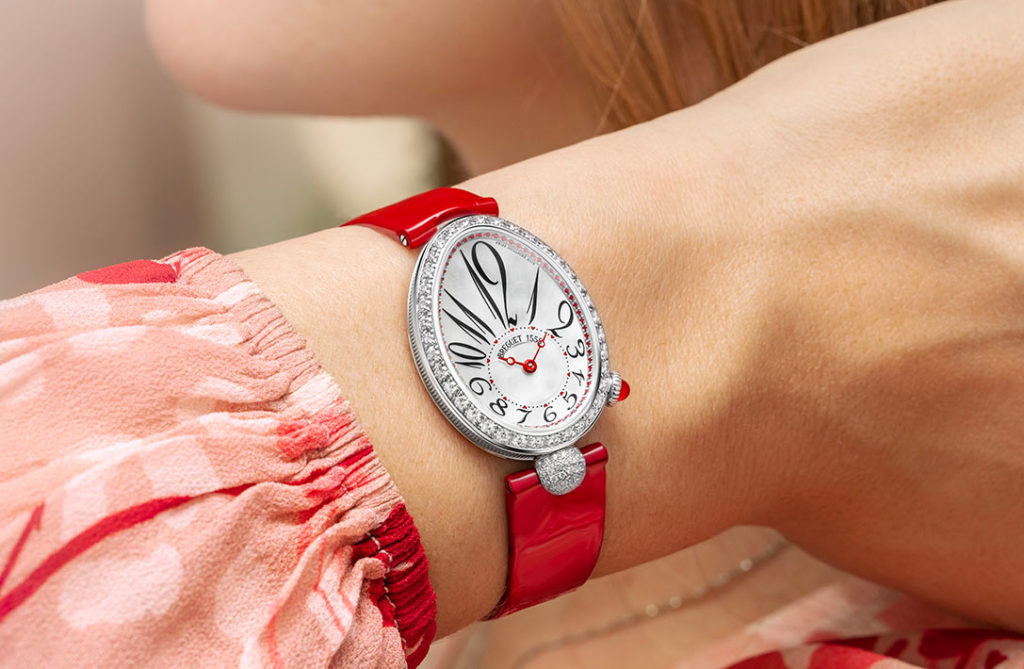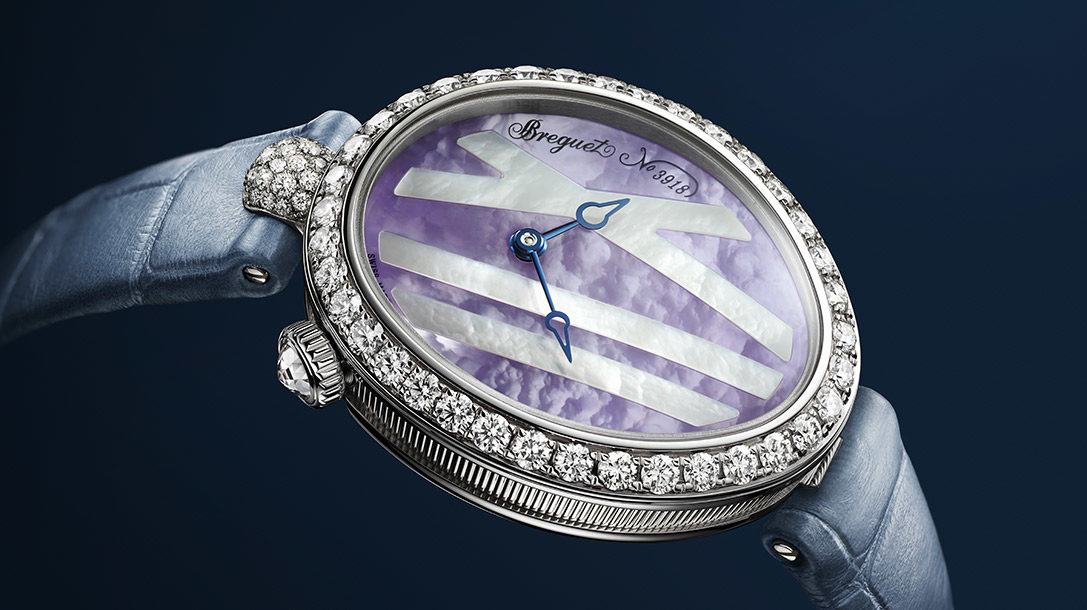
It was in 2002 that the Reine de Naples watch made its entry into the watchmaking world, based on the main codes depicted in the books of special orders by Abraham-Louis Breguet (1747-1823) and then his son Antoine-Louis Breguet (1776-1858), carefully preserved in the museum of the current eponym company, of piece no. 2639 that the ingenious Paris-based watchmaker developed at the request of Caroline Murat (1782-1839) between 1810 and 1812. Indeed, the young sister of Emperor Napoleon I (1769-1821), then sovereign consort of the Italian region, wanted to be able to read the time inscribed freely on her wrist like a piece of jewelry. The essential stylistic vocabulary of this now-defunct object can be found in the reinterpretation of what remains the first wristwatch in the history of watchmaking.
The Reine de Naples collection reinvents the time imagined by Abraham-Louis Breguet and worn by Caroline Murat, with its timepieces featuring a mechanical heart and oblong-shaped cases whose flanks are adorned with delicate fluting. At around 4 o’clock, the crown is topped with a cabochon-cut or briolette-cut gem, while at 6 o’clock, a metal sphere, sometimes lined with stones, secures the alligator leather, silky satin or braided chain bracelet. Time follows the curved lines of the dial, with its hour-markers extended between 11 and 2 o’clock, while two small Breguet-style hands indicate the hours and minutes in the center of the dial. Steel, white or pink gold, polished or diamond-coated: the precious case measures 36.5mm high by 28.45mm wide, with a thickness of 10.5mm. A smaller version (32×27), available in different versions, completes this family of watches.

